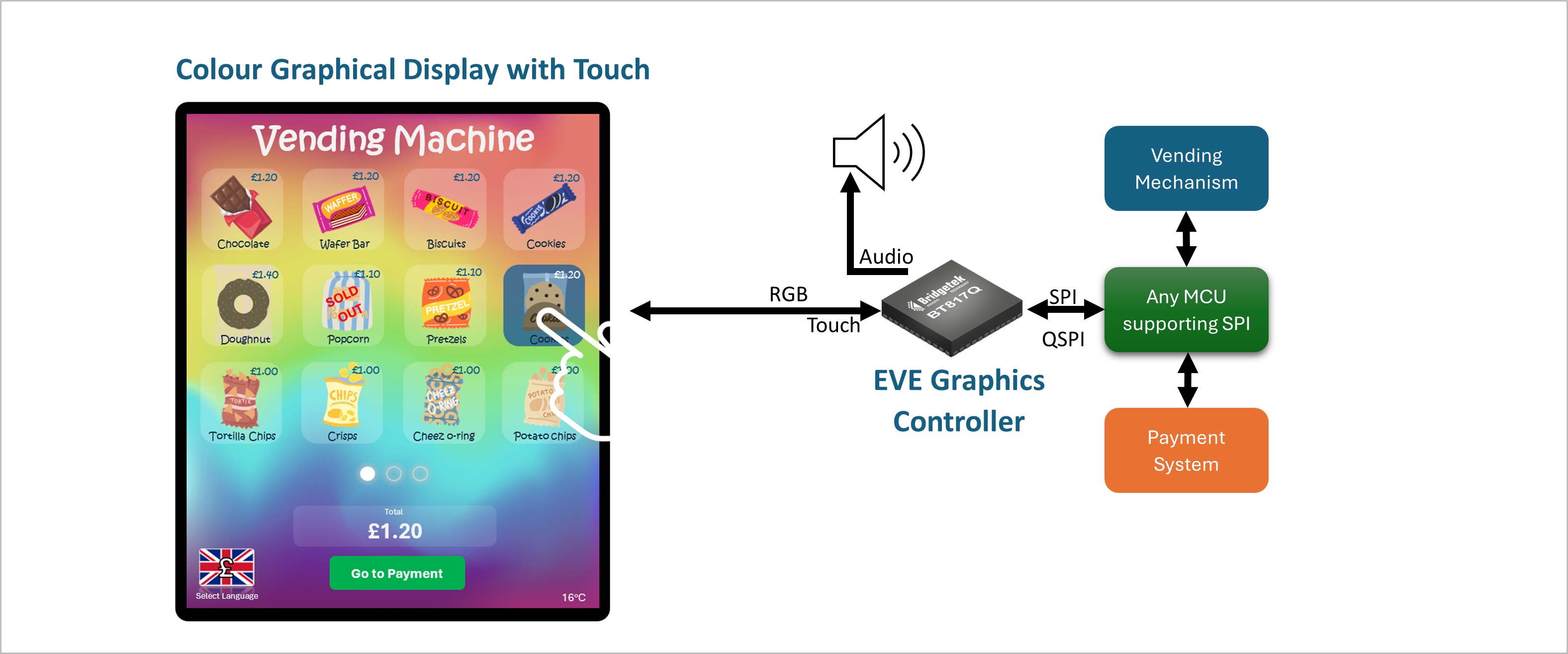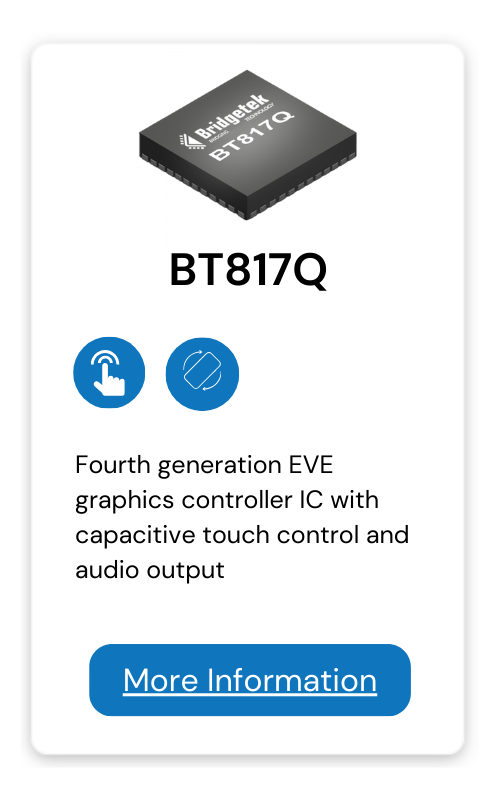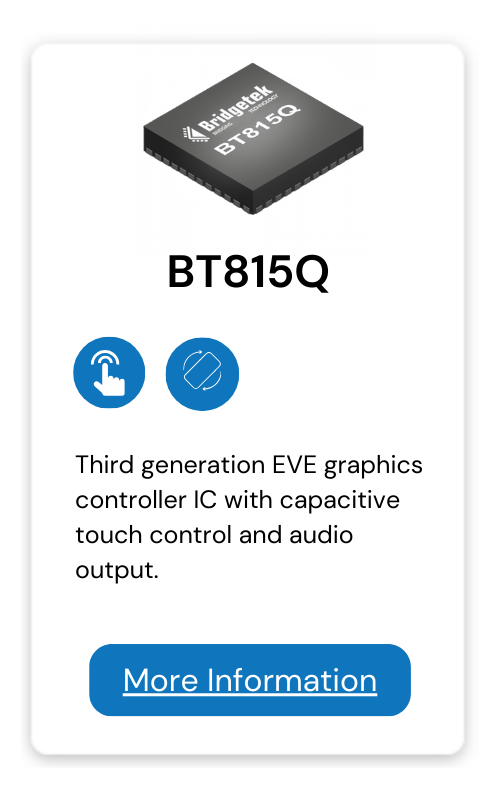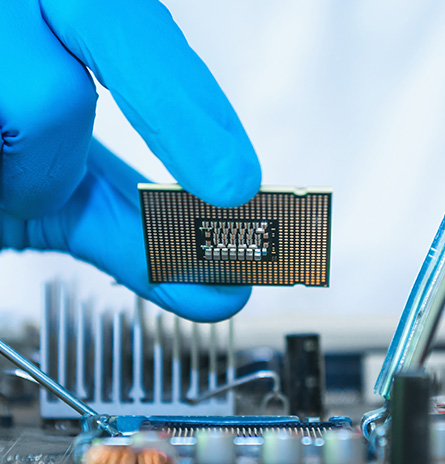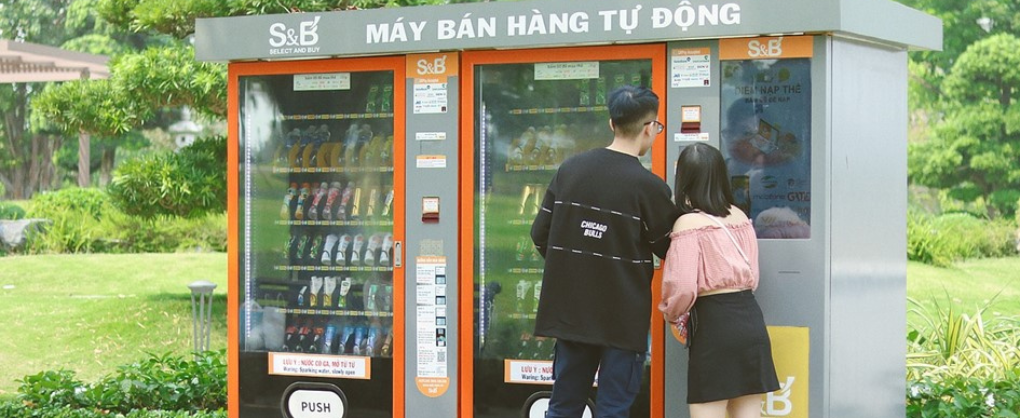
Overview
Traditional vending machine controls normally consist of mechanical buttons for selecting a product from the vending machine to purchase. These mechanical buttons are often paired with a 7 segment display to relay information to the customer and can be difficult for users to interact with.
An EVE-enabled touch display provides an ideal solution for this, as it allows designers to provide an attractive full colour user interface as well as allowing users to select products via touch. Product previews can also be displayed on the screen to ensure users are confident they are selecting the correct product.
Resistive and capacitive touch versions are available. Traditionally, resistive touch is considered well-suited to operation within harsh environments, whilst capacitive touch offers a more smartphone-like touch operation. However, EVE’s custom touch now also allows use of capacitive screens behind protective glass etc. for vandal and weather resistance, allowing a better user experience for applications such as vending machines.
EVE can bring many benefits to a vending machine interface including:
- Freedom to design an optimal interface from the ground up, centered around the user experience
- Provide a more informative display (for example, including product images)
- Simple updates to pricing and descriptions on the display
- Update to a touchscreen whilst retaining much of the original vending machine MCU/electronics
- Improve accessibility with different fonts, sizes and languages
Key Features:
The following key features of EVE make it ideal for vending machine interfaces:
- Resistive or Capacitive touch interface avoids the need for mechanical buttons
- Extensive graphical capabilities and bitmap support for an attractive user interface design
- Text command allow full messages to be displayed for a better user experience
- Custom fonts allow multi-language support rather than different controller versions for each region
- Audio sound generation for touch acknowledgement and user alerts with minimal effort from the MCU
- Variety of screen sizes supported to suit different form factors (e.g. 3.5”, 5”, 7”, 10” and circular)
- Use with almost any MCU which has an SPI Master including low-end MCUs
- Eliminate the need to re-design the product using a more complex MCU with on-board graphics capabilities
- Software tools, examples and technical support from Bridgetek avoid steep learning curves


